-
HER FINNER DU OSS:
Bondistranda 29E, 1386 ASKER
HER FINNER DU OSS:
Bondistranda 29E, 1386 ASKER
23 Aug. 2023
What Is a Halfway House & What to Expect
Every person is different when it comes to what will set them for success. That being said, halfway houses can provide the type of support and structure that someone in recovery might need to stay on track with their sobriety. People who are considering a halfway house may want to talk to a therapist or doctor. Additionally, many folks may be considering cost when looking at the potential of a halfway house. One of the most important things you must have in your early days of recovery is a safe place to live – one that supports your decision to stay clean. If you’re new to recovery, sober living may be the way to go.

This degree of service may be essential for overcoming challenges and achieving long-term healing. For some individuals, the thought of returning home after being in a treatment facility can be overwhelming. Many people see halfway house activity this return as a path to the same issues, emotions, and behaviors that led to their addictions in the first place. A halfway house can be one of the steps that makes it easier for someone to maintain their sobriety.
What Is a Halfway House in Addiction Recovery?
This removes temptation and helps people in recovery see that it is possible to enjoy life without these substances. We are dedicated to providing the highest care and help to needy individuals and families. If you or a loved one needs addiction recovery and rehabilitation, I encourage you to call us immediately. We proudly offer specialized halfway houses for men and women with children. Our approach to rehabilitation is tailored to meet these groups’ unique needs and challenges. When maintaining recovery is at the top of your to-do list, you commit to making decisions that support sobriety.

The government funds these facilities and serves as transitional homes for those who have finished their addiction treatment programs. A halfway house can be an incredibly beneficial stepping stone for those re-entering society. By providing a safe and supportive environment, individuals in sober living homes can access the resources they need to successfully transition into everyday life. Consider a halfway house if you or someone you know is seeking a place to live that offers support and guidance. If you are interested in learning more about sober living homes or finding one in Austin, Texas, don’t hesitate to contact us.
24 Boston Celtics roster and coaching staff
Patience is a skill that can be improved upon with practice. It is also a skill that will help you develop a sober lifestyle after addiction. Now that you are sober, you may question what life after addiction looks like, and most importantly, how you can avoid relapse. In one model, upon admission, a patient is classified as to the type of disability, https://ecosoberhouse.com/ ability to reintegrate into society, and expected time frame for doing so. Give us a call and we can help find the right treatment program for you or your loved one – even if it’s not ours! If you are ready to begin the next step in your road to recovery, contact us today to speak with our caring support staff about finding the right place for you.
- By: admin
- Comments: No Comments
30 Mar. 2023
Methadone Withdrawal Schedule: Timelines & More Delphi

Outpatient treatment is methadone withdrawal also generally recommended for those who have completed an inpatient program but are still new to sobriety. Quitting “cold turkey” will cause more severe withdrawal symptoms. Doctors usually recommend tapering off use of methadone to make the withdrawal process more bearable.
When to Contact a Medical Professional
Before joining our company, she wrote and edited content about alcohol, https://ecosoberhouse.com/ THC, opioids, and other psychoactive substances. Her writing is based on data from scientific publications, government agencies, and medical journals. Eleanor has deep knowledge in this field and knows how to present complex information in an accessible way. She aims to raise public awareness about the risks of substance abuse and encourage people to seek help. Through her work, Eleanor wants to contribute to solving the problem of drug addiction and alcoholism. With the mixture of candy and soda, it offers a delicious taste.
About Medical News Today
Like all opioids, methadone’s origins can be traced back to opium, a product of the poppy plant. Methadone is a Twelve-step program common choice for medication-assisted treatment. Even though it can be habit-forming, when used correctly, it can help you overcome more intense drug dependencies. Many people find support at local 12-step meetings, such as Narcotics Anonymous. Most methadone clinics offer some sort of counseling, so that’s a good place to start. Opioids affect the way your brain works, flooding it with neurotransmitters.
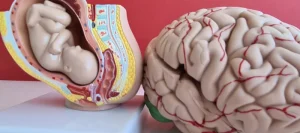
Management of mild opioid withdrawal
- Plus, if you’re not ready to talk, you can sign up to receive insights via text.
- But withdrawal symptoms for a slow-acting opioid like methadone can last for a week or longer.
- The U.S. Drug Enforcement Administration (DEA) publishes that nearly 2.5 million Americans reported abusing methadone at least once in their lifetime as of a 2012 national survey.
- This can range from lowering the dosage 10 percent to 50 percent daily or over a period of two weeks at a time.
- When you take opioid medication for a long time, your body becomes desensitized to the effects.
It’s possible for some people to become addicted to methadone as they use it to wean themselves off of another prescription painkiller. Introducing a substance like methadone throws off that balance. It does this by initiating counter-regulatory processes to find a new balance that incorporates the drug.
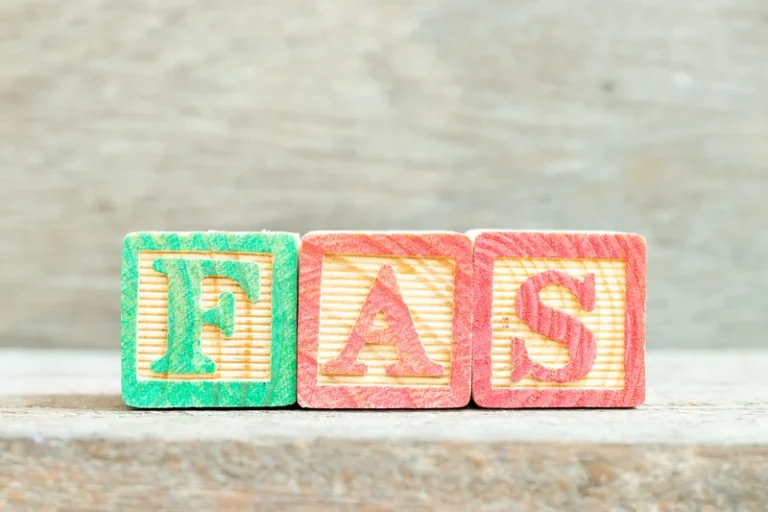
If methadone is not taken again, withdrawal symptoms can occur. Withdrawal can cause emotional distress and physical discomfort, which is compared to a really bad case of the flu. The intense withdrawal symptoms and drug cravings that can accompany methadone withdrawal can make it difficult to stop taking the drug suddenly. Instead, it is recommended to taper off it slowly to lessen the impact of the potential side effects and to minimize relapse.
How to Avoid Methadone Withdrawal
Many users especially struggle with methadone withdrawal because the medication stays in the body longer. Methadone withdrawal symptoms are usually moderate and flu-like. One of the biggest risks during withdrawal is the possibility of relapse and potentially life-threatening overdose. When a person takes methadone regularly, their brain and body get used to certain amounts of the drug. When use is stopped, even for a short time, tolerance can drop. If a person then starts taking methadone again in the amounts they used to before, the body will no longer be able to metabolize it as quickly, and a toxic overdose can result.
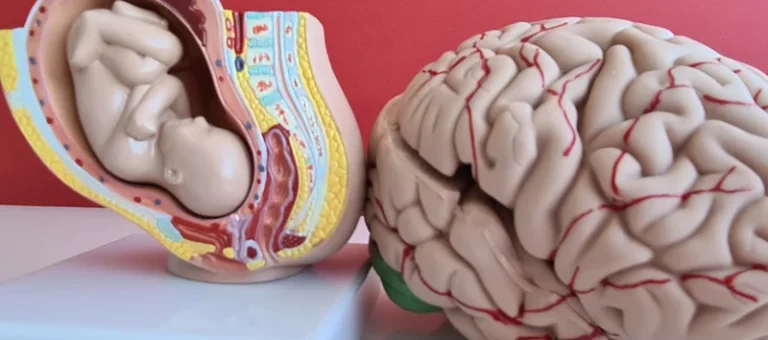
The stages of methadone withdrawal depend on the dosage and how much of the medication a person takes. Methadone is an opioid that doctors may prescribe to people experiencing pain for whom other opioids do not work or to those with a high risk of developing addiction. Methadone withdrawal is difficult, so it’s best not to attempt to do it on your own. Let your doctor know any troubles you are having so that they can help treat your withdrawal symptoms if they arise.
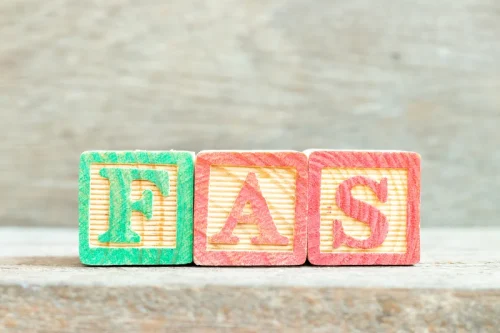
Symptomatic treatment can be used in cases where residual withdrawal symptoms persist (Table 3). This dose of diazepam (up to a maximum of 40mg) is then given to the patient daily in three divided doses. Even if the patient’s equivalent diazepam dose exceeds 40mg, do not give greater than 40mg diazepam daily during this stabilisation phase. Procedure for administering clonidine for moderate/severe opioid withdrawal. Patients should drink at least 2-3 litres of water per day during withdrawal to replace fluids lost through perspiration and diarrhoea. Do not try to engage the patient in counselling or other psychological therapy at this stage.
What is methadone withdrawal?
However, it can take anywhere between 15 and 60 hours for methadone to be out of a user’s system. For some people, it may take several days for withdrawal to begin. The significance, duration, and timeline can be influenced by biological, environmental, and genetic factors. Environmental aspects, including stability of home life and stress levels, can influence the healing process. The more stressed a person is, the more intense withdrawal is liable to be and the greater the odds for relapse.
- By: admin
- Comments: No Comments
13 Mar. 2023
Alcohol and Sleep: What You Need to Know
I do not claim to have the experience that’d qualify me to advise you on your health, and I’m only providing this as a reference to encourage a broader interest in medicinal plants. Be sure to label your tincture with the name of the herb, the date it was made, and any other relevant information. The main thing you’re looking for is to ensure that you have “true” wild lettuce is spines on the leaf midrib. Sometimes they’re more prominent than others, but that’s one of the main ID features. Wild lettuce’s compounds may also provide relief from itching and skin irritation. In a 2022 molecular study, researchers looked at the potential for treating Uremic pruritus, a condition that causes severe itching related to end-stage renal disease, with compounds in domestic lettuce (Lactuca sativa).
The Best Foods To Help You Sleep
- A person should speak with a healthcare professional to learn more about healthy alcohol use.
- You can also take it as needed to calm anxiety attacks, fall back asleep, or treat minor pain.
- Alcohol is another potent depressant that may interact with and increase the effects of sedatives, causing increased sedation and more significant impairment.
- Through a scientific understanding of flumazenil’s pharmacology, prescribing clinicians can tailor treatment plans to individual patient needs, ensuring safe and effective reversal of benzodiazepine-induced sedation.
Circadian rhythms thrown out of sync can weaken the lining of the gastrointestinal tract, making it more vulnerable to permeation—that’s the leakiness that allows bacteria, toxins, and food to leave the intestines and enter the bloodstream. People who suddenly stop taking sedatives may experience withdrawal symptoms. These can happen rapidly, be severe, and even be life threatening. Withdrawal symptoms may appear as early as 12–24 hours after the person’s last dose. Alcohol is another potent depressant that may interact with and increase the effects of sedatives, causing increased sedation and more significant impairment. The effects could slow down or even stop a person’s breathing and heart function.
Dependency tends to become most obvious if you experience withdrawal symptoms. This happens when your body responds to the absence of the sedatives with uncomfortable or painful physical and mental symptoms. Doctors commonly prescribe sedatives to treat conditions like anxiety and sleep disorders. One important thing to note is that the effects of alcohol vary greatly by individual and are influenced by a number of factors, including your body chemistry, sex, weight, alcohol tolerance, and the dose of alcohol consumed. Alcohol acts on the brain and may increase feelings of relaxation.
It’s not because I don’t appreciate a glass of wine with a great meal, or a few beers on a hot summer evening. It’s because I know what alcohol can do to sleep and healthy circadian rhythms. If you’re undergoing alcohol withdrawal symptoms or want to reduce alcohol cravings, you may be prescribed medication. The FDA-approved options include naltrexone, acamprosate, and disulfiram.
Caffeine and Sleep
However, recognition of the complexities of the relationship between alcohol and insomnia is important for several reasons. As such, clinical alertness to insomnia as a symptom of alcohol problems might facilitate timely intervention. Sleep disturbance is common among patients in remission from alcohol use disorders, and understanding this relationship may help clinicians assist patients in recovery. Recognition of alcohol problems among insomniacs might also lead clinicians to alter their treatment of sleep complaints, limiting, for example, their use of sedative-hypnotic agents.
Follow us on social media
Lack of standard definitions and measurements of both insomnia and alcohol use render uncertain the magnitude of any association. For insomnia, questions and their time frame (e.g., past month vs. last 12 months) vary. Some studies have defined “sleep problems” through self-report (again, over varying periods of time), while How to Get Sober from Alcohol other studies have defined “sleep problems” in terms of polysomnographic measures (e.g., latency, percentage of REM sleep). Some self-report measures (e.g., amount) tend to underestimate sleep disturbance while other measures (e.g., time to get to sleep) tend to over-estimate insomnia in comparison to polysomnography (30,31).
Follow Us
One male participant vomited approximately 45 min after the complete ingestion of the beverage, causing the immediate cessation of data collection. The participant underwent the placebo before the alcohol condition, implying that data points were missing in the alcohol condition only. Because the present statistical analyses can accommodate missing data (see below), this participant’s data were included in the analyses. To evaluate the subjective feelings of sedation and stimulation, the Brief-Biphasic Alcohol Effects Scale (B-BAES) 38 was administered (Fig. 1). The B-BAES contained a total of 6 items (Energized, Excited, Up; Sedated, Slow Thoughts, Sluggish) that participants rated on a scale from 0 (not at all) to 10 (extremely) 38.
Alcoholics at risk for relapse are easily identifiable by routine questions about sleep (4). Waking up often, getting too little sleep, and having trouble getting to sleep are often endorsed. The potential for improving drinking outcomes by treating sleep disturbance is being investigated.
Fortunately, educating patients about the risks of combining medications with alcohol may help them avoid negative outcomes. Here, we describe briefly how alcohol and medications can interact, and we provide a few examples of common medications that could interact negatively with alcohol. We provide links to resources to help you mitigate these risks, including a consensus-developed list of potentially serious alcohol-medication interactions in older adults. To control participants’ absorption of alcohol, participants had 5 min to drink the first and second half of the beverage (total of 10 min).
If you’ve experienced an overdose, you may experience mental confusion, vomiting, unconsciousness, slow heart rate, low body temperature, bluish skin, and irregular breathing, among other symptoms. The effects of alcohol depend largely on how much and how quickly you drink, along with varying factors such as your personal history, genetics, body size, gender, tolerance, and other key factors. Depressants affect the neurotransmitter gamma-aminobutyric acid (GABA), which slows down your brain activity. This can lead to side effects such as relaxation, drowsiness, slurred speech, decreased inhibition, and problems with coordination. One of the first signs of being short on fluids is a feeling of fatigue and weakness.
- By: admin
- Comments: No Comments
06 Mar. 2023
Can Microdosing Psychedelics Improve Your Mental Health? Science in the News

The rapid growth of artificial intelligence increases the risk of misinformation and job displacement, while societal polarization fuels extremism, social unrest, and declining trust in public institutions,’ notes StudioCone. The study took advantage of cross-campus collaborations between Kwan and Fernandez-Ruiz to measure electrical brain signals and an international collaboration with Vaidya’s team, which led many of the behavioral aspects of the study. Other co-authors included researchers from Yale University, Columbia University and the New York State Psychiatric Institute. Nevertheless, these findings suggest that beneficial effects from psychedelics are plausible, spurring greater motivation for ongoing clinical trial research.

Nearly Half of Americans Support Legalization of Psychedelics for Mental Health
Her goal is to help change the medical and mental health care paradigm from numbers-oriented, medication-based sick care to individual-focused well care and liberation to the most realized version of self. When you hear the term “psychedelics,” you might think of hallucinogenic and mystical experiences. The question of scalability and access also looms over psychedelic therapy’s future [45]. Most psychedelic clinical trials require a team of one supervising psychiatrist plus two graduate-level mental health professionals. A single patient undergoes several therapeutic preparation sessions in advance of the psychedelic session, an 8-h dosing session, and several therapeutic integration sessions following the dosing.
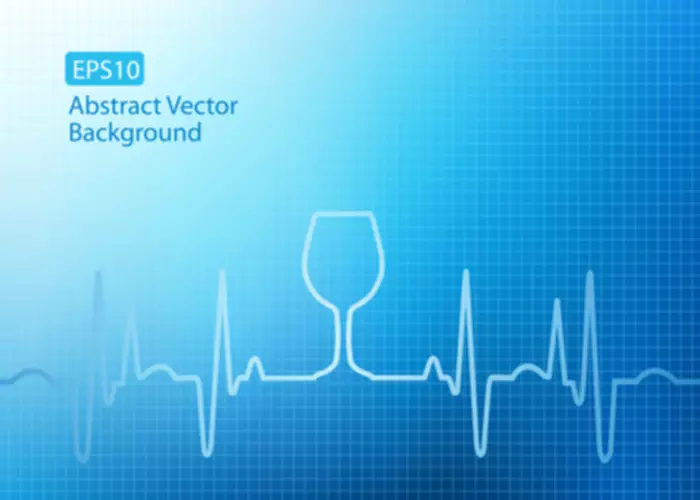
Which Psychedelic Drugs Are FDA-Approved for Use?
- However, because the study relied on self-reporting, it does not conclusively prove that psychedelic experiences can affect mental health.
- Increased connection, or connectedness, was a central theme in one study on psilocybin treatment for depression [53].
- This will require an investment of time and resources, and it is not likely that these approaches will be broadly available to psychiatric patients except in clinical trials for the next few years.
- Orb represents the first instalment of StudioCone’s wider exploration into psychedelic futures, employing design futures methodologies to envision and critique potential scenarios — ranging from the near-term (0-5 years) to the long-term (10-15 years).
- With expanded FDA grants and increasing research, experts are hopeful that psychedelic therapy is on the upswing.
“There needs to be this meeting of the minds, and the openness that the scientific and Western way of thinking is not always the right way,” Eriacho says. Clinical trials, for instance, often rely on narrowly defined clinical surveys to capture symptoms. “Those are Western concepts,” she says, and from her perspective, those metrics miss a lot. “You don’t have a very comprehensive way of looking at what an individual may be experiencing,” she says. “There were fears that if anything really bad happened [during the trial], it would reflect very badly on the university.” UConn Health spokesperson Lauren Woods says that is false.
What Research Says About Psychedelics as Mental Health Treatments

More recently, emerging evidence has pointed out the potential therapeutic properties of psilocybin and LSD, as well as their ability to modulate functional brain connectivity. Moreover, MDMA, a compound belonging to the family of entactogens, has been demonstrated to be useful to treat post-traumatic stress disorders. In this review, the pharmacology of hallucinogenic compounds is summarized by underscoring the differences between psychedelic and nonpsychedelic hallucinogens as well as entactogens, and their behavioral effects in both animals and humans are described. Together, these data substantiate the potentials of these compounds in treating mental diseases.
- Given the highly personalized nature of psychedelic-induced patient experiences, quantitative measurements might not capture the full spectrum of phenomena experienced by patients.
- Together, these data substantiate the potentials of these compounds in treating mental diseases.
- Assessing the relative contribution of the included studies to the thematic synthesis and overall themes, we found that lower-quality studies and studies with divergent research aims contributed comparatively less to the synthesis.
- When these mice were treated with a drug to increase serotonin levels in a region of the brain, the neurons formed substantially more dendritic spines than in mice without the protein.
- An infusion of federal funds could be used to make psychedelics research more equitable and inclusive.
MDMA, a psychotropic drug with unique prosocial effects
That is a disturbing thought, said Ghaemi, since roughly 3% of the Massachusetts’ population has schizophrenia or bipolar disorder. “If they’re exposed to hallucinogens, then they’re likely to get much worse in a dangerous way,” he said. It requires a high level of presence, attentiveness, self-regulation, the are psychedelics addictive ability to track the nervous system of your client and your own, and to self regulate and to really be present through that,” Quinn said. “Quite surprisingly, only one region—the ventral hippocampus—when we infused it with DOI, was able to retain the psychedelic’s effect of reducing anxiety,” Kwan said.

Explore Our Featured Online Therapy Sponsors
- By: admin
- Comments: No Comments
24 Nov. 2022
Potential adverse effects of amphetamine treatment on brain and behavior: a review Molecular Psychiatry

However, this research is still maturing, and many questions remain about whether and how these technologies might inform clinicians’ care of people with stimulant use disorders. Over the past several decades, data from basic research have contributed to an increased understanding of neuronal mechanisms involved in the effects of amphetamine, including methamphetamine. A comprehensive review of amphetamine neuropharmacology is beyond the scope of the current article, and excellent reviews already exist (eg, Sulzer et al, 2005; Fleckenstein et al, 2007). Nonetheless, a brief overview will provide insight into the neurotransmitters involved in the actions of amphetamine. As can be seen in Figure 1, amphetamine-related drugs bear a striking resemblance to the catecholamine neurotransmitters dopamine (DA) and norepinephrine (NE). The structural similarities between amphetamine and catecholamine neurotransmitters provide clues about the drugs’ mechanisms of action.

What are the long-term effects of methamphetamine misuse?
If they are not taking the drug, they feel dreadful, so they continue with the abuse in order to keep going. The more they abuse the substance, the higher their tolerance for it becomes, which means having to keep on taking more in order to get the same effects. As long as the drug is used as prescribed, it can be very effective at treating these conditions. Some people use amphetamine to suppress their appetite, so they can go for a long time without eating. The withdrawal symptoms are serious enough that amphetamine addicts should not try to stop using on their own.
- This impairment may persist for months or even years after one stops taking MA (Yang et al., 2018).
- Truck drivers, students and athletes were especially likely to abuse amphetamines.
- Even a single cocaine exposure was sufficient to reduce dendritic spine density in neurons 77.
Work Addiction and Stimulant Use: Latent Profile Analysis in a Representative Population Study

But along with these beneficial effects, you could also experience unwanted side effects. Experts are still studying the potential long-term effects of Adderall, especially when it’s taken at high doses. Long-term use of Adderall at high doses can cause significant side effects, including changes in how your brain Amphetamine Addiction produces neurotransmitters. Some people taking Adderall at a dose prescribed by a doctor may not experience noticeable side effects.
- Symptoms of amphetamine toxicity span a spectrum, encompassing tachycardia, hypertension, impulsivity, aggression, serotonin syndrome, psychosis, and seizures, underscoring the complexity of its clinical manifestations.
- However, some authors have concluded that the abuse potential of methylphenidate is equivalent to that of amphetamine, on the basis of findings in animal models and human research 88.
- In light of these considerations, it is somewhat disconcerting that the results from the study were construed as findings of pathology rather than preliminary evidence of group differences that appear to have limited or doubtful functional significance.
- Such noninvasive techniques can depict higher or lower activity levels of different brain areas by measuring metabolic activity (e.g., glucose use; Fakhoury, 2014).
Chapter 2—How Stimulants Affect the Brain and Behavior
- Today, only dextroamphetamine, lisdexamfetamine, methylphenidate and mixed salts amphetamine are made for medical use.
- Few clinical studies of ADHD, however, have documented differences among d-, l- and racemic amphetamine.
- A network of these brain regions integrates emotional and cognitive aspects of memory and triggers craving when it reacts to cues and memories.
- The current illicit amphetamine epidemic is increasing the incidence of this problem.
- Australian methamphetamine users had 11 times the prevalence of psychosis found in the general population, and methamphetamine dependence further tripled the risk for psychosis, even after adjusting for prior history of psychotic disorders 193.
By boosting norepinephrine levels and supporting neurotransmitter balance, Performance Lab Mind improves mental clarity and helps users stay focused under pressure, offering an effective alternative for those looking to enhance cognitive function without the use of stimulants. The majority of nonprescription stimulant users reported obtaining the drugs from a peer with a prescription – a process termed diversion. The diversion of stimulants is very common and can begin in childhood, adolescence, or young adulthood. A study conducted by Wilens et al. (2008) reported that lifetime rates of diversion ranged from 16% to 29% of students with stimulant prescriptions asked to give, sell, or trade their medications (Wilens et al. 2008). One survey reported that 23.3% of middle and high school students taking prescribed stimulants had been solicited to divert their medication to others at a rate that increased from middle school to high school (McCabe et al. 2004). A review of 161 elementary and high school students prescribed the stimulant MPH revealed that they had been asked to give or sell their medication to others (Musser et al. 1998).
What are the long-term effects of using it?
In the 1990s, longer acting forms of amphetamine were developed using capsules of mixed d- and l- salts in both immediate release pellets and enteric-coated, delayed-release beads. The different salts and beads are metabolized at different rates, resulting in a less dramatic onset and termination of therapeutic action. Amphetamine is most often administered twice daily in immediate-release formulations (Dexedrine, DextroStat, or Adderall IR tablets), or once a day in sustained-release formulations (Dexedrine or Adderal XR capsules, Vyvanse tablets).

- It works by enhancing brain energy, increasing oxygen delivery, and promoting neurogenesis, all of which support clear thinking and long-term brain health.
- Alpha Brain has become a favorite for people looking to stay productive without relying on stimulants, as it improves cognitive processes and helps clear brain fog, making it a suitable and effective alternative to traditional ADHD medications.
- The prescription stimulants methylphenidate and d-amphetamine increase dopamine signaling—methylphenidate by blocking dopamine transporters and d-amphetamine by enhancing dopamine release from nerve terminals (Lakhan & Kirchgessner, 2012).
Adderall can not only cause changes in your brain chemistry and function, it may also lead to heart damage, digestive problems, and other unwanted side effects. According to research, Adderall helps decrease impulsivity in people living with ADHD. The steep increase in the diagnosis of ADHD during the 1990’s in the United States led to a parallel increase in production and societal exposure to legally distributed amphetamine. This change contributed to the surge in illicit use of pharmaceutical amphetamine, and the illegal manufacture and use of methamphetamine and methylenedioxymethamphetamine that continued to accelerate through the 1990s.

- By: admin
- Comments: No Comments
26 Oct. 2022
The Three Components of Alcoholism: Mind, Body, and Spirit
He was a night club entertainer, addicted to alcohol, tobacco, and drugs. He instantly dropped all of those habits and began to follow Christ. But I know others who have struggled with those habits for years after making a profession of faith. https://en.forexdata.info/top-10-best-sober-houses-in-boston-ma-january-2024/ The Christian ideals and principles that they followed enabled the 40 Pioneer AAs to have an extremely high success rate of over 75%. This important documented fact is the reason why it is so vital to make the Biblical roots of early A.A.
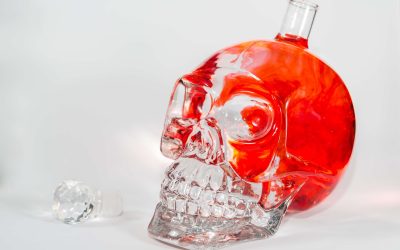
They may anticipate a sensational event that will forever change their lives, permanently elevating them above the routine din of the daily grind, and giving them the secret to ongoing happiness. Today’s guide explores the spiritual malady meaning in the context of 12-step recovery groups like AA (Alcoholics Anonymous). According to AA, spiritual malady is often fueled by resentments and renders life unmanageable. There are many persons in recovery who are not interested in discussing or even hearing about spirituality.
What are 3 body parts affected by alcohol?
When we have the first sip of a drink, or whiff of a drug, it is then controlling our bodies. Sponsees typically do their Fifth Step, review their moral inventory written as part of the Fourth Step, with their sponsor. The Fifth Step, as well as the Ninth Step, have been compared to confession and penitence.
- Although spiritual awakenings are often part of the recovery process, obviously they are far from unique to people in recovery.
- Furthermore, “In the Big Book chapter, ‘There is a Solution,’ Bill Wilson said that will-power alone would not solve problems.9 He made it clear that the solution lay in a relationship with God.”10 Now, lets move ahead to the Biblical roots of Step Two in early A.A.
- They also experience an ineffable quality from becoming spiritual – one where their feelings go beyond mere words.
- Principles” seem to have forgotten the important Christian principles that produced early A.A.’s high success rates.
We statistically addressed these limitations to the extent possible by transforming the variables and using non-parametric procedures, and results suggest that even low levels of struggle can have important implications for post-traumatic distress. A potential difficulty with measuring spiritual struggle is its relative infrequency. However, studies have shown that spiritual struggle is common among college students (Astin et al., 2004; A. N. Bryant & Astin, 2008), indicating that studying spiritual struggle, even in samples that may not identify as highly religious, is feasible. In the present sample, most students indicated they were at least slightly religious (64.1% at Time 1 and 59.2% at Time 2) and at least slightly spiritual (73.5% at Time 1 and 70.6% at Time 2). The development and maintenance of PTSD symptoms have been shown to relate to particular negative cognitions after trauma exposure, including negative appraisals of the trauma and its implications (Dunmore, Clark, & Ehlers, 2001; Ehlers, Mayou, & Bryant, 1998). These negative cognitions have been shown to predict PTSD symptom severity better than other risk factors (Ehring, Ehlers, & Glucksman, 2006) and to predict the persistence of PTSD symptoms (Fairbrother & Rachman, 2006; Halligan, Michael, Clark, & Ehlers, 2003).
Spiritual Illness: Everything You Need To Know
The PCL contains 17 items rated on a five-point Likert scale from 1 (not at all) to 5 (extremely). Chaplains play a vital role in hospice care, providing spiritual and emotional support to patients, their families, and the hospice team. Hospice care is a unique and invaluable form of healthcare that focuses on providing compassionate end-of-life support to individuals and their families. In this delicate and emotionally charged environment, the role of the chaplain in hospice care is particularly significant.
Unnecessary and excessive tension in lifestyle can hinder all spiritual growth. This can make you feel burnt out and easily lose contact with your higher self. Another symptom of spiritual illnesses is the absence of vital Oxford House Recovery Homes: Characteristics and Effectiveness PMC energy. This energy does not have to be physical, as it can also be mental and emotional. By practicing mindfulness and staying present in your everyday moments, you can better ensure that you can deal with this disease.
What is Spiritual Malady?
They can record stories, write down their questions and muse about possible answers. It gives them an outlet to work through their thoughts and emotions. If requested, reach out to a spiritual leader (chaplain, minister, priest, rabbi, imam) who can visit with the individual and answer their questions. The three must be addressed to find healing, recovery, and to live life sober. Spiritual awakenings don’t necessarily happen the way we might expect, along a timeline we prefer, or in a form obvious to us. Spiritual awakenings often evolve so gradually that they are almost imperceptible.
The spiritual struggle scale and subscales were tested separately as mediators in models with trauma group as the predictor and PTSD symptomatology as the outcome, controlling for the level of PTSD symptoms reported at Time 1. Mediation analyses were conducted using bootstrapping, a nonparametric statistical procedure that uses repeated sampling to estimate and provide a confidence interval for the indirect effect of the independent variable (IV) on the dependent variable (DV) through the mediator (M). Bootstrapping also provides coefficients and significance tests for the direct effects of the IV on the M (a), the M on the DV (b), and the IV on the DV through the M (c’); the total effect of the IV on the DV (c); and the partial effect of the control variable on the DV. Unlike null hypothesis significance testing, which derives a p value for the indirect effect based on the standard normal distribution, bootstrapping does not impose the assumption of normality on the sampling distribution of the indirect effect (Preacher & Hayes, 2008). Post-traumatic stress disorder (PTSD) characterizes the reexperiencing, avoidance, hyperarousal, and emotional numbing symptoms that may persist in response to traumatic events.
- By: admin
- Comments: No Comments
26 Sep. 2022
Fetal alcohol spectrum disorder Wikipedia
There’s also evidence where FAS has affected people even among ancient civilizations but this is a condition that wasn’t officially named 1973. When a woman is carrying an unborn child, the alcohol she’s consuming is, directly and indirectly, affecting the fetus that is developing within her own womb. In doing so, he shed light on the struggles faced by individuals with disabilities and promoted inclusivity in society. His indomitable spirit serves as a beacon for all those facing adversity, reminding us that inherent limitations do not define our potential or limit our ability to make significant contributions.
Temple Grandin – renowned animal behavior scientist and autism advocate
By doing so, he not only challenged societal stigmas surrounding mental health but also served as a role model for others facing similar challenges. Beyond his time on reality television, Durbin continues to advocate for mental health awareness, using his platform to inspire others and spread hope. Despite facing numerous challenges due to his diagnosis with fetal alcohol syndrome, he rose above adversity, capturing the hearts of the American Idol audience during his remarkable run on the show.
Morgan has spoken at school assemblies, colleges, community colleges, hospitals, churches, and other locations in order to promote FASD awareness. In addition to providing flutes to at-risk youth and disadvantaged individuals, he has also established a flute program that has thus far provided over 650 Native flutes to the needy. Although he first waited until he turned 19 to fully disclose he struggles with side effects of Fetal Alcohol Syndrome, actor Daniel Radcliffe is now perhaps the most vocal about the effects of FAS in the public eye. He revealed this to the Daily Mail, the popular British newspaper tabloid, at age 19 along with the news that he suffered from dyspraxia. Dyspraxia is a coordination disorder that made it difficult for the Harry Potter star to tie his shoes or write properly. Randy Jackson is among the famous people who are suffering from fetal alcohol syndrome.
Learning About Liza Minnelli
- Her journey serves as an inspiration to others, demonstrating that individuals with FAS can find success and make a lasting impact in their chosen fields.
- It is also confirmed that alcoholism was very much a part of the Culkin Family, even before he was born.
- Samuel L. Jackson’s struggles with alcoholism stem in part from his challenging upbringing, suggest some observers.
Temple Grandin is not only a renowned animal behavior scientist but also a powerful advocate for individuals with autism. Born with fetal alcohol syndrome, I find her story particularly inspiring and relatable. Despite the challenges she faced due to her condition, Temple never let it hold her back from pursuing her passion for animals and making significant contributions to the field of animal behavior science. In conclusion, Nick Vujicic is more than just a celebrity with fetal alcohol syndrome – he is an icon of resilience who empowers others through his remarkable journey. Through his speeches and books like Life Without Limits, he encourages individuals to embrace their uniqueness instead of allowing it to hold them back.
By creating a supportive environment that values diversity and promotes inclusivity, we can empower those affected by FAS to reach their full potential. He showed us that nothing should hold us back from achieving greatness, even if we face significant challenges from birth. At every stage in his life, Hawking displayed resilience and an unrelenting pursuit of knowledge that continues to inspire people worldwide. Overall, Christine Ha’s triumph on MasterChef season 3 stands as a testament to human resilience and determination. Her story reminds us all that disability should never define one’s abilities or hinder their pursuit of passion. With each dish she created, Christine challenged societal norms and paved the way for more inclusiveness within the realm of cuisine – truly making her an extraordinary celebrity with Fetal Alcohol Syndrome.
His passion for writing began back in college as he wanted to share his views with the world. He enjoys writing about science and nature, health, travel, cities, famous people, and mysterious murders. His writing style is entertaining and enlightening while giving you a fetal alcohol syndrome celebrities fresh perspective on several topics.
Don’t Let Financial Worries Stop You from Getting Treatment
It is important to recognize that Reese Witherspoon’s journey sheds light on the challenges faced by celebrities with Fetal Alcohol Syndrome. By sharing her experiences, she not only raises awareness about the profound impact of FAS but also provides a platform for others to understand the complexities and struggles faced by individuals living with this condition. Nevertheless, it is crucial to acknowledge that consuming alcohol during pregnancy can lead to potential complications, including permanent and incurable brain damage, resulting in impaired mental functioning.
Learning and thinking issues
Mitte was diagnosed with cerebral palsy at the age of three and has tirelessly used his platform to raise awareness and challenge stereotypes surrounding disabilities. Born Roy Frank Mitte III in Jackson, Mississippi, he began pursuing acting at a young age and eventually landed one of the most iconic roles in television history. The film The Boy in the Plastic Bubble brought David Vetter’s extraordinary tale of resilience and determination to light.
Born with no arms and no legs due to a rare condition called tetra-amelia syndrome, Nick has defied all odds and become a motivational speaker, author, and evangelist. His powerful message of hope and determination resonates with people from all walks of life. He has worked closely with organizations such as United Cerebral Palsy and Shriners Hospitals for Children to promote inclusivity and accessibility for people living with disabilities. His experiences growing up with cerebral palsy have informed much of his activism, which focuses on breaking down barriers and creating equal opportunities for all individuals regardless of their abilities.
- By: admin
- Comments: No Comments
14 Sep. 2022
How to Stop Drinking Alcohol: Making a Plan That Works for You
By opening up about your relationship with alcohol, you might also encourage others to explore their own drinking habits. “Whatever people’s drinking habits are, cutting down will decrease cancer risk. And for those who don’t drink, research shows that your cancer risk is lower the longer you are teetotal,” says Clark. This is because having alcohol in your system means you spend less time in the REM (rapid eye movement) stage of sleep, so you wake up feeling less refreshed.

Done With Alcohol? Here’s How To Stop Drinking
- Behavioral therapy can be a highly effective treatment method in outpatient settings because it encourages patients to control their addiction.
- The 12-step philosophy aims for a holistic therapeutic intervention.
- The symptoms listed above may be a sign of a severe form of alcohol withdrawal called delirium tremens, or DTs.
- If you’d caught me during my “Quitting Era,” you would’ve found me armed to the teeth with self-help books, making grand plans about how I was going to manifest my way to sobriety.
For some recovering alcoholics, individual therapy is https://prodominikany.ru/ekskursiya-akamas-kipr-zapovedniki-i-nacionalnye-parki-kipra/ necessary to develop the skills to reduce drinking and set achievable goals. Outpatient treatment is also often recommended as a form of “continuing care” for those who have completed an inpatient treatment program to help maintain the long-term effects of recovery and prevent relapse. The actual length of time spent at an inpatient facility will vary depending on individual circumstances.
What are the 12-step Alcohol Abuse Support Groups?

For the concert, the singer looked stunning in a sparkly white mesh dress with a matching bodysuit underneath. The show’s popularity was renewed last https://urs-ufa.ru/en/reinforced-concrete-rings-for-a-well-basic-requirements-for-the-production-process.html year when it arrived on Netflix. Adams said on the podcast that by the time Season 8 was gearing up, the only reason he could think of for staying was because of the financial gain. He consulted his mom, who advised him against returning if it was only for money. It’s to take care of yourself, set healthy boundaries, and be prepared for when they decide they want something different. In the end, you’re not just delaying their struggle; you’re deepening it.
What is considered a heavy drinker?
It is not unusual to feel anxious, restless, excited, or shaky when trying to quit alcohol. This is why http://ferma-tv.ru/warez/76773-fl-studio-producer-edition-v1158-alpha.html it is extremely crucial to follow all the recommendations discussed in the text. For those who prefer nonreligious support groups, there are alcohol support groups other than AA. Non-12-step groups take a secular approach to treatment and recovery.
- Detoxing at home usually takes longer because you should be cautious to avoid serious complications.
- The tips/instructions help but without the right method/map you may never find your way to freedom so please read on after the tips to understand the best method to stop alcohol use.
- To get started, try searching a directory like Psychology Today or Inclusive Therapists, both of which have filters you can use to look for specific support around substance use.
- Alcohol rehab helps you taper off alcohol, and it treats other side effects and causes of alcoholism.
- You may be able to detox at home and recover from alcoholism with the help of support groups such as Alcoholics Anonymous.
- The Chief Medical Officers’ guidelines for both men and women to keep health risks from alcohol to a low level is to consume 14 or fewer units of alcohol per week.
It’s important to know that if your body has developed a strong dependence on alcohol, trying to quit “cold turkey” can be hazardous to your health. For some people, it’s best to get professional help when creating your reduction plan. “Alcohol is often thought of as a great social lubricator, and people who don’t drink in the UK are often viewed with suspicion, other than those who don’t drink for religious reasons,” says Prof Marlow. Binge drinking is particularly problematic for our immune systems. The NHS defines binge drinking as “drinking heavily over a short space of time”, or eight units of alcohol in a drinking session for men, and six units for women. By Sarah Bence, OTR/LBence is an occupational therapist with a range of work experience in mental healthcare settings.

- By: admin
- Comments: No Comments
22 Aug. 2022
Alcohol and Epilepsy: A Potential Seizure Trigger
.jpg)
” You need to consider more factors than just the alcohol itself — especially your medications. Be sure to ask your doctor about the effects of alcohol on any medications you might be taking. Binge drinking is defined as a pattern of drinking that brings blood alcohol concentration to 0.08 percent or higher.
.jpg)
Alcohol and risk of SUDEP in a person with epilepsy
You could develop status epilepticus, which is multiple seizures, or prolonged seizures, and can lead to permanent brain damage or death. However, there have epilepsy and alcohol been reports that the risk of seizure increases in an alcohol-dependent person who misuses a sedative and takes nonsedative AEDs. Alcohol poisoning can lead to seizures, but these may not result from the alcohol intake itself. Lower blood sugar or head trauma caused by a sudden fall could be the underlying cause. However, withdrawal symptoms accompanying delirium tremens do not need to be present when a person experiences a seizure. In a 2020 study, research found that the risk of SUDEP was twice as high in people with a history of alcohol dependence or substance misuse disorder.
- The researchers also found that the risk of epilepsy increased as alcohol consumption increased.
- Be sure to ask your doctor about the effects of alcohol on any medications you might be taking.
- Apart from this, there is little research on the occurrence of alcohol-related seizures in patients with epilepsy.
- It has been demonstrated that assessing alcohol consumption is biased by recall even when the recall period is only 1 week (25).
- Possible confounding variables that were included in the logistic regression model regarding the occurrence of alcohol-related seizures in patients with epilepsy within the last 12 months.
- Let’s take a look at the relationship between alcohol and seizures to shed some light on why drinking is a potential trigger.
Alcohol and sudden unexpected death in epilepsy: do not pop the cork
- A heathcare provider can assess whether light or moderate alcohol drinking is safe.
- Delirium tremens is the most severe form of alcohol withdrawal and affects about 2% of people with alcohol use disorder.
- ” You need to consider more factors than just the alcohol itself — especially your medications.
- A double-blinded, randomized, interventional study on 52 subjects with epilepsy demonstrated that a social alcohol intake over a 4-month-period did not increase seizure frequencies (2).
- Ultimately, everyone’s brain is different and responds to alcohol in different ways.
- Alcohol withdrawal can be dangerous for many reasons, but seizures and the possible development of delirium tremens increase the risk of severe complications or even death.
First, our data on alcohol use depended on patients’ self-reporting and may be affected by recall bias. It has been demonstrated that assessing alcohol consumption is biased by recall even when the recall period is only 1 week (25). In our study population, alcohol consumption is probably underestimated. Moreover, patients were seen at our institution at scheduled outpatient visits and did not attend the clinic after acute manifestations of alcohol-related seizures. Only a minority of patients documented details on alcohol-related seizures in seizure diaries. Our retrospective data collection on alcohol-related seizures also depended on subjects’ recall capability, and may reflect bias due to recall errors.
Your introduction to emergency seizure medication
Even if alcohol itself doesn’t trigger your or your loved one’s seizures, it’s important to understand whether your antiepileptic drugs (AEDs) are compatible with alcohol. Withdrawing (stopping drinking) from alcohol causes people’s brains to become more excitable. This means that some people who do not actually have epilepsy may also experience seizures when they stop drinking. This is especially true for alcoholics or people who often drink heavily.
Medical
This rapid intoxication can surprise a person and cause them embarrassment, stress, and anxiety — which can, in turn, trigger seizures. In one small study from 2018, people with epilepsy who reported seizures after drinking had consumed seven or more standard-sized drinks before their seizures occurred. Nearly all of the seizures occurred within 12 hours after they stopped drinking. Furthermore, seizures seemed particularly likely if the participants did not regularly drink that much alcohol. Fifteen out of 95 (15.8%) alcohol-experienced but now abstinent subjects had experienced alcohol-related seizures in the past.
Symptoms of an Alcohol Seizure
The CMA suggests patients with alcohol dependence, including alcohol withdrawal seizures, should not be allowed to drive any type of motor vehicle. If a patient wishes to regain their licence, s/he must complete a recognized rehabilitation program for substance dependence and remain sober and and seizure-free for 12 months. People who drink a lot of alcohol for an extended period can develop permanent changes in their brains, and removing alcohol can lead to withdrawal symptoms. Seizures, and a severe condition called delirium tremens, are possible complications of alcohol withdrawal.
Overall, from the data presented, are we convinced of the real, complex, and fatal relationship between alcohol consumption and epilepsy? In addition, further clinical and experimental studies are required to more clearly define the mechanism and obtain accurate epidemiological data on the relationship between alcohol consumption and SUDEP. Another one of the big reasons people with epilepsy are warned not to consume alcohol is that many of the anti-seizure and anti-epileptic drugs that treat epilepsy do not mix well with alcohol.
Alcohol can be a big part of many people’s social life, so you may be wondering if it’s ever safe. Remember that even a small amount of alcohol is bad for your health, and it is lower risk to avoid alcohol altogether, according to the CDC. Common triggers include lack of sleep, stress, alcohol, and not taking their prescribed anti-seizure medication (ASM).
About half of all people with alcohol withdrawal will have two to four seizures within the six hours that follow the first.5 Without prompt treatment, these episodes can be life-threatening. Others have seizures when they try to quit drinking after long periods. These can be life-threatening episodes, so it’s critical to know what they look like and how they’re treated. The effect of alcohol on people with epilepsy will vary from person to person, even on the same medication. People with epilepsy who drink alcohol may also be less likely to adhere to their medication schedule. If you are especially sensitive to either your AED or alcohol, it may be best to avoid drinking while taking that particular medication.
The amount of alcohol intake before alcohol-related seizures was at least 7 standard drinks, or the equivalent of 1.4 liters of beer or 700 milliliters of wine. In almost all cases, seizures occurred within 12 hours of stopping alcohol consumption. In patients with generalized genetic epilepsy, seizures commonly manifest within 30 min after awakening. A transcranial magnetic stimulation study on patients with genetic generalized epilepsy demonstrated that motor cortex excitability was significantly increased in the early morning (24). In multivariate analysis, alcohol consumption within the last 12 months was independently related to AED monotherapy.
- By: admin
- Comments: No Comments
12 Aug. 2022
10 Ways That Resiliency Skills Help Battle Peer Pressure
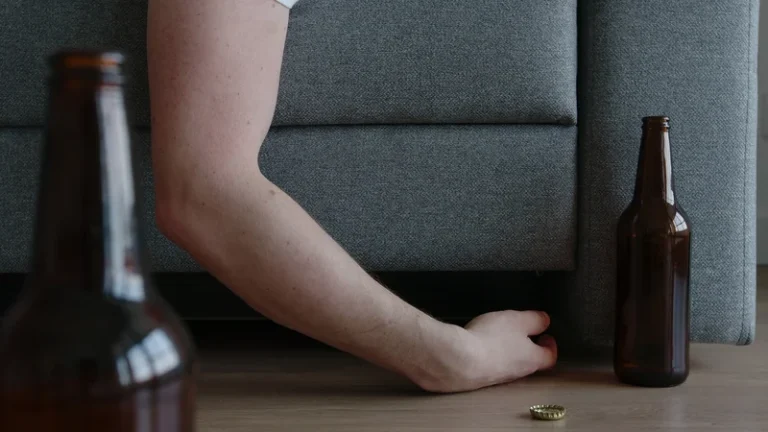
It’s possible that a friend who is peer pressuring you simply wants to spend more time with you or connect with you, but they don’t know how else to ask. Peer pressure causes people to do things they would not otherwise do with the hope of fitting in or being noticed.
Seek positive vibes
Teens with mental health problems or low self-esteem may also be extra vulnerable to peer pressure. Youth often look to their peers for validation, if they experience self-doubt or insecurities, this can make them more likely to engage in risky behaviors to gain social acceptance. Positive peer pressure can encourage you to engage in beneficial or healthy activities. However, it’s essential to distinguish between positive and negative peer pressure and use your resiliency skills to make informed decisions that are right for you. The key to resisting peer pressure is for the teen to have role models, new ideas, and the positive effects of healthy self-confidence. Seeing peers use substances regularly can also give the impression that the substances are safe to use or won’t have any negative effects.
- Also, kids often get into trouble when they act without thinking – so thinking and talking about peer pressure can help prepare your child when he does have to face a difficult moment with friends.
- By coping with peer pressure, we become responsible for our actions.
- Reading your story can help other young people deal with the tough times.
- Peer pressure transcends age groups and can begin before the first day of school at daycare, playgroup, and more.
Find the right words to resist peer pressure
For example, if a pal pressures you to smoke, ask her why she smokes, how long she has smoked, if she minds having ashtray breath. His manager was not overly concerned about it, as he made up by being a high performer at work. But Pranay’s tardiness made him the butt of his colleagues’ jokes. Get health tips and parenting advice from Children’s Health experts sent straight to your inbox twice a month. A brief overview of the Student Rights and Responsibilities (SR&R) for middle school and high school students.

What strategies can help handle negative peer pressure?
Reading your story can help other young people deal with the tough times. “They made me do things I didn’t want to do. I felt anxious, pressured and lonely.” Knowing and acknowledging it for what it is can help us decide what to do next. We can also take the intentional step of being mindful about who we surround ourselves with, and who we chose to be closer to.
- Saying “no” becomes difficult in such contexts, even when uncomfortable, since humans innately seek to “belong.”
- Nurture connections with those who build you up as is, not those who require you to compromise core aspects of yourself to belong.
- Peer pressure has the potential to be either positive or negative in impact.
- For example, if you hang out with a group of people who take school seriously, you may be more likely to prioritize academics too.
- Other examples include eating more healthily and exercising, being more punctual, exploring positive hobbies, finding ways to support others, and so on.
Which ways are you more comfortable with, or less uncomfortable with? Know that if you are not comfortable explaining, the word “no” alone is a full sentence. Learning more about assertive communication is very helpful here. It is possible to remain friends with someone who does things you that don’t like, without you having to change for them. 80% of teenagers got into the habit of smoking due to negative peer influence, and 75% of teenagers have tried alcohol due to the same reason. Being aware of, and carefully choosing the influence of peers that will lead to healthy and happy experiences is a lifelong process.

How To Tackle Peer Pressure: Types, Strategies, Examples
- If someone persistently pressures you to do something, you can try telling them how it affects you.
- You’ll feel less alone when pressured if you have even one friend committed to avoiding risky behaviour, too.
- That way, you’re fulfilling both of your needs in a mutually beneficial way.
- Apart from the above, difficulty sleeping and low moods are also plausible signs.
- For example, ask yourself – do certain friends bring out my best self?
- You can experience peer pressure from people without them saying anything to you, and you can experience it from direct remarks made by others.
We all know what it’s like while dealing with peer pressure when so much seems to be riding on performance and meeting goals. These things can also be considered as a positive activity and there are many strategies to navigate academic pressure if you feel at any time. In contrast, how to deal with peer pressure negative peer pressure coerces others towards risky, inappropriate, unethical, dangerous or illegal choices. This pressure may be overt (e.g. direct goading to try drugs) or subtle (e.g. everyone at a party drinking shots, creating an implicit expectation for others to join in).
- One of the first lessons of dealing with peer pressure is to take a clear stand.
- Therefore, you must know how to tackle peer pressure, be a stand-out team player, and excel in your career.
- Conversely, in a one-to-one setting, the individual may not be as easily wavered as they are better able to stand their ground and act in accordance with their values.
- In-depth counselling can enhance poor self-image, communication skills, assertiveness training or early-stage addiction – all frequent factors in difficulty resisting peer pressure.
- Your friends and acquaintances should accept you for who you are.
- Dealing with peer pressure can be difficult, but below are some ways to help address it.
Teens should learn that every action has consequences and that if they do something negative, they will have to face them. It would be good for teens to surround themselves with people their age who have the same interests and share the same behavior. Living up to the expectations of others can certainly be draining. Peers can be your friends who are about your age and have similar interests and experiences. Peers can also be other kids who are about your age and are involved in the same activities with you or are part of a community or group you belong to. You may not consider all of your peers to be friends, but they can all influence you.

Ways That Resiliency Skills Help Battle Peer Pressure
This is also a stage in life where friend groups are of utmost importance and the need to fit in is a major factor in decision making. Learn more about the types and effects of peer pressure and how you can prepare your child to deal with it in a healthy way. There will come a time when important decisions are made for future life.

- By: admin
- Comments: No Comments

